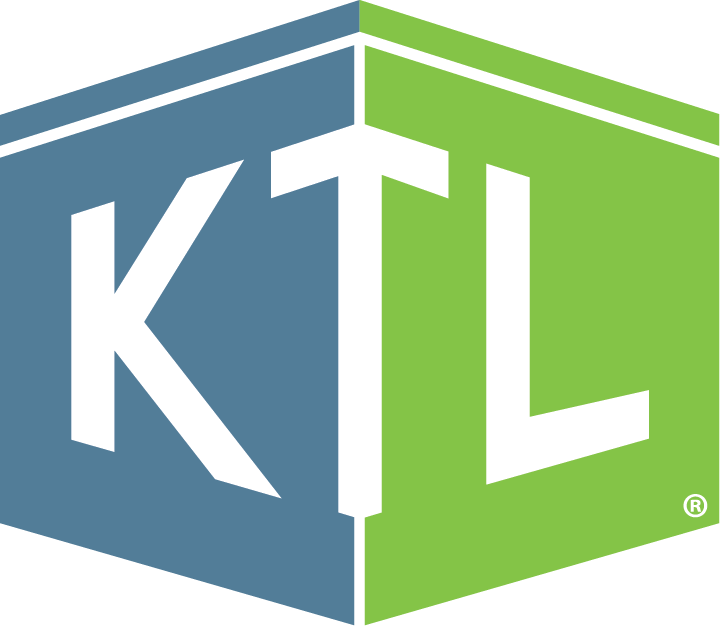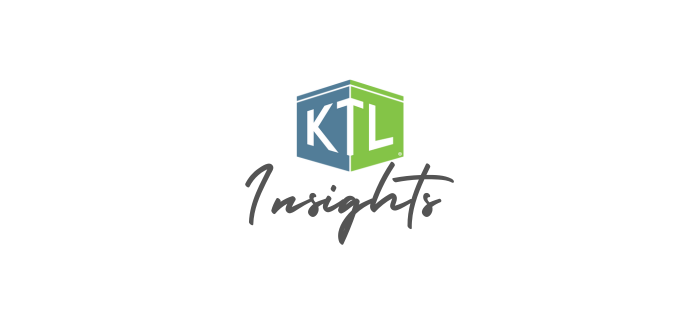
Comments: No Comments
Staff Spotlight on Liz Hillgren
Get to know our KTL team! This month, we are catching up with Senior Consultant Liz Hillgren. Liz brings over 20 years of environmental experience in both industry and consulting to the KTL team. She is based in Ann Arbor, Michigan.
Tell us a little bit about your background—what are your areas of expertise?
My background is in hazardous waste. I worked for transfer, storage, and disposal facilities (TSDFs) for 20 years. I have worked at a landfill, a stabilization facility, a fuel blender, a used oil recycler, and a wastewater treatment facility. I have managed technical groups but also customer service throughout my career in industry.
What types of clients do you work with? What are the biggest issues you see them facing right now?
My KTL customers are largely manufacturing facilities. Most of them are mid-sized, so they don’t always have tons of money—but they do have real regulatory issues.
What would you say is a highlight of your job?
I like to help my customers solve problems, because I feel like I am part of their team. I also like to learn new things—my job always has something new to think about.
What do you like to do in your free time?
I am a gardener, and I enjoy being outside. I live in an old house full of projects and potential. I like to sew. I just started beekeeping, so that is currently where all my time and money are spent!
Read Liz’s full bio.

Comments: No Comments
Join KTL Virtually at ChemEdge 2020
NACD’s 2020 ChemEdge is making the shift to full virtual this year. The conference may look a little different, but it is still filled with all the critical knowledge and networking opportunities chemical distributors expect from ChemEdge.
ChemEdge 2020
Tuesday, September 1 – Thursday, September 3
Register Now!
As always, KTL will be an active participant in ChemEdge 2020. Be sure to join KTL Senior Consultant and Responsible Distribution Adviser Jake Taylor for the following presentations:
+ Digging Up the Roots! Root Cause Analysis Review and Exercise
Tuesday, September 1, 11:00 am-12:15 pm
+ OSHA Top 10 List
Wednesday, September 2, 9:00 am-10:00 am
We look forward to making the most of this virtual event and hope many of our clients and friends will be joining us at ChemEdge 2020 this September.

Environment / Kestrel Tellevate News / Safety / Technology Enabled Business Solutions
Comments: No Comments
KTL Renews Agreement to Provide Access to EHS Regulatory Question Modules
KTL is pleased to announce that we have renewed our agreement with the Construction Engineering Research Laboratory (CERL) of the U.S. Army Corp of Engineers, which provides access to the following regulatory question modules:
- The Environmental Assessment and Management (TEAM) Guide and the related state supplements address environmental compliance in the areas of air quality, cultural and natural resources, hazardous materials and waste, pesticide management, pollution prevention, energy conservation, petroleum, oils and lubricants, storage tanks, solid waste management, toxic substances, water quality, and more.
- The Occupational Safety and Health (OSH) Guide is used in assessing compliance with the standards of the Occupational Safety and Health Administration (OSHA). It may also be used in combination with an agency-specific safety and occupational health manual. The OSH Guide is based on OSHA regulations from Title 29 of the Code of Federal Regulations.
KTL originally entered into this agreement with CERL in 2015. CERL’s experts are dedicated to conducting ongoing research, updating federal and state environmental and federal safety regulatory requirements, and developing and maintaining standardized audit checklists for those regulations. These checklists are very comprehensive; are used by auditors for DOD, DOE, DOI, and other federal agencies; are updated regularly to reflect any regulatory changes; and cover virtually all of the functions that would be present in a broad mix of industrial companies.
Our agreement allows KTL to make the TEAM Guide and OSH Guide available through an electronic format (i.e. dynaQ™). KTL staff can use these modules to stay current on changing federal regulations. The question modules bring a basis of significant credibility related to the reliability and completeness of audit content via a software tool that manages audit data and makes finding information more efficient. With this agreement, KTL remains one of the only professional service firms in the country to offer access to the following regulatory question modules.

Comments: No Comments
Staff Spotlight on Roberto Bellavia
Get to know our KTL team! This month, we are catching up with Senior Consultant and Partner Roberto Bellavia. Roberto has been with KTL for three and a half years and is based in the Chicagoland area.
Tell us a little bit about your background—what are your areas of expertise?
I was born and raised in Rome, Italy. I have a master’s degree in animal production science and started my career in Italy working on the farming side of the food supply chain. I was working with farmers that had small manufacturing operations for cheese, salami, meat, and I was doing food safety (HACCP) plans for them. I also worked in a couple of dairy farms.
I first came to the U.S. in 1999 for a genetic research project at the University of Minnesota on mapping of chromosome 29 in bovine. I moved to the U.S. permanently in 2001, when I got married. I worked at the Italian Chamber of Commerce, made connections, and started working for Turano Pastry Shop as Production Manager. I learned Spanish before I learned English! I wanted to move back into the meat industry, so I began working at Chiappetti Lamb and Veal in the Stockyards District in Chicago, the last federal-inspected plant in the city. When they closed, I moved to U.S. Foods as the Director of Food Safety for the Stockyards brand.
I joined the consulting world at KTL in January 2017. My areas of expertise revolve around food safety, quality, and regulatory compliance. I am well-versed on all the GFSI schemes (i.e., FSSC22000, SQF, BRC, IFS) and the USDA – FSIS and FDA requirements. In this role, I really enjoy working with different people. There is no reporting structure in my team; rather, it is about people working together to achieve the same objectives. I am in the business of food safety. I believe that people always want to do the right thing, but sometimes they need someone to tell them what the right thing is or to show them how to get there.
What types of clients do you work with? What are the biggest issues you see them facing right now?
All my clients are in the food supply chain—from food manufacturing, to food additives and food packaging, to distributors and importers. I also work with a company in the dietary supplement arena, which is an area with growing food safety requirements.
Data management is one of the biggest challenges facing my clients right now. How do you collect and use data, while also protecting information? Every company needs to fulfill someone else’s requirements (e.g., regulatory, standards, customers, supply chain) by submitting information, auditing, reviewing, and assessing and allocating levels of risk. Our clients look to KTL to help them meet those needs.
Training and culture change are two other large areas where food companies rely on KTL’s expertise. When a company decides to pursue a major change in their food safety program, they also need help in culture change and much of that starts with training.
Lastly, the new rules of the FDA – FSMA have been a challenge, including implementing allergen control, environmental, and food defense/intentional adulteration programs.
What would you say is a highlight of your job?
I get to be 100% involved in what I do. I always seek the highest results and take pride in everything I do. It is important to me to show my clients the value they get from working with KTL, and what we have accomplished once our project is done. We are currently focusing a lot of our expertise on data management and predictive analytics, developing dashboards that allow our clients to see in real time the performance of the food safety programs we are developing. It is very satisfying to see those results.
What do you like to do in your free time?
My free time is about my wife, my three kids, and my dog. When I don’t work, I enjoy spending time home. I like to coach soccer and have been a coach for over eight years. I enjoy a home-cooked meal (because I travel and eat out a lot), spending time at the beach (but that never seems to happen), and playing cornhole (a/k/a bean bags). I also like motorsports, so when I can (and when COVID is not cancelling half of the season), I enjoy watching Formula 1 racing (there is something about technology, courage, and teamwork that is fascinating) and European football (a/k/a soccer).
Finally, I enjoy road tripping with the family—or just driving alone—and discovering and seeing something new. I have been in three different Portlands in the U.S.! I feel that every place I go, no matter how remote or rural it is, has something interesting for me to see.
Read Roberto’s full bio.

Comments: No Comments
KTL Announces Partnership with German Company Martin Mantz
KTL is pleased to announce our partnership with Martin Mantz Compliance Solutions (Martin Mantz), developer of the GEORG Compliance Management System® software. KTL is providing regulatory compliance expertise to the German-based company as it expands its offerings to clients with operations in the United States.
“Martin Mantz has created something unique with the GEORG software in that it simplifies and provides an interpretation of legal and technical requirements in a customer-specific database,” KTL Principal Lisa Langdon states. “KTL’s understanding of industrial operations, as well as U.S. legal and technical requirements (e.g., EPA, OSHA, FDA, ISO), allows us to translate these requirements into simple tasks in the GEORG system that employees can follow to help fulfill regulatory requirements.”
How GEORG Works
GEORG is used to make the requirements of standards and regulations comprehensible and transparent. KTL specializes in the practical mapping of legal requirements and audits. These audits allow KTL to create technical content for the GEORG system based on facility-specific applicability. We then work directly with the company to delegate the identified tasks. If there are revisions in the standards/regulations, KTL works in the system to ensure tasks are updated to meet regulatory requirements.
The benefits of this approach include:
- Effectiveness – All tasks are assigned, easily formulated, and regularly updated.
- Efficiency – The effort and expertise required to understand complicated regulations is reduced.
- Transparency – Responsibilities are clear and easily visible to all employees.
- Conformity – Compliance status within the system reflects the degree of fulfilment of the related requirements.
Faber-Castell Expands GEORG Implementation to U.S. Subsidiary
Faber-Castell Cosmetics, an internationally renowned Martin Mantz customer with worldwide operations, is already benefitting from the Martin Mantz-KTL partnership. After successful implementation of the GEORG software in their German facilities, Martin Mantz has worked with KTL to expand usage to Faber-Castell’s subsidiary in the U.S.
About Martin Mantz Compliance Solutions
Martin Mantz Compliance Solutions, based in Grosswallstadt and Leipzig, Germany, offers its contractual partners services in the area of legal organization (GEORG) of companies to avoid organizational negligence and compliance violations. This includes consulting and provision of the compliance software GEORG Compliance Management System®, implementation of the technical and legal modules, as well as construction and maintenance of the customer-specific database. https://www.martin-mantz.de/
About Kestrel Tellevate LLC
KTL is a multidisciplinary consulting firm that specializes in providing environmental, health, and safety (EHS) and food safety management and compliance consulting services to private and government clients. Our primary focus is to build strong, long-term client partnerships and provide tailored solutions to address regulatory requirements. KTL’s services include management system development and implementation, auditing and assessments, regulatory compliance assistance, information management solutions, and training. KTL is a Small Business Administration-registered company with headquarters in Madison, WI and Atlanta, GA and offices across the Midwest and Washington, D.C. www.kestreltellevate.com

Comments: No Comments
Join KTL at NACD’s Events this February & March
Southern Region Meeting: February 24-26, 2020
KTL is looking forward to seeing many NACD member companies at the NACD Southern Region Meeting in Savannah, GA February 24-26. It’s always such a great time to gain great insights from the NACD speakers, touch base with you on the latest happenings in your organization, and continue our conversations about your business and compliance needs.
Jake Taylor, KTL’s Responsible Distribution Adviser, will be available throughout the meeting to talk more about how KTL can help chemical distributors more effectively manage management system requirements (e.g., Responsible Distribution, ISO 9001) and ongoing EHS&S and food safety compliance obligations.
Spring Regulatory & Responsible Distribution Workshop: March 10-12, 2020
Plus, save the date for the NACD Spring Regulatory & Responsible Distribution Workshop this March in Long Beach, CA. The 2020 Regulatory Workshop focuses on International Trade for Chemical Distributors on March 10.
Attention turns to Responsible Distribution March 11-12. There are many great sessions planned for new and experienced NACD members, including KTL’s interactive session on Thursday, March 12 from 9:15-10:15: Digging Up the Roots! Root Cause Analysis Review and Exercise. Jake Taylor will be guiding participants through properly identifying root causes using real-world examples from 6th cycle non-conformance findings.

Comments: No Comments
KTL Expands International Resources
 Kestrel Tellevate is expanding our international resources with the addition of Consultant Emily Watt. Emily has in-depth knowledge of and experience as a Project Manager, working with federal contracting regulations and requirements. As a Consultant with international experience across multiple sectors, Emily will be working with KTL’s multinational clients and government agencies to provide EHS compliance and sustainability support.
Kestrel Tellevate is expanding our international resources with the addition of Consultant Emily Watt. Emily has in-depth knowledge of and experience as a Project Manager, working with federal contracting regulations and requirements. As a Consultant with international experience across multiple sectors, Emily will be working with KTL’s multinational clients and government agencies to provide EHS compliance and sustainability support.
Emily has worked on implementing projects for the U.S. Forest Service (USFS), U.S. Agency for International Development (USAID), U.S. Department of Agriculture (USDA) Agricultural Research Service (ARS), Office of Cooperative Threat Reduction (CTR) Chemical Security Program, and U.S. Department of State International Visitor Leadership Program (IVLP). Her primary countries of experience include Nigeria, Zimbabwe, Vietnam, Iraq, Turkey, Brazil, Malawi, South Korea, and India.
Read Emily’s complete bio for more information.

Comments: No Comments
Holiday Wishes from KTL
One of the real joys this holiday season is the opportunity
for all of us at Kestrel Tellevate LLC to say thank you
and to wish you the very best for the new year.

Comments: 1 Comment
Kestrel & Tellevate Announce Business Merger
We are excited to announce that Kestrel Management LLC (Kestrel) and Tellevate LLC (Tellevate) have merged to provide enhanced compliance and management consulting services to industry and government agencies. The newly merged entity will be conducting business as Kestrel Tellevate LLC (KTL) as of November 1, 2019.
Partnership History
Kestrel and Tellevate have a long-standing relationship dating back to 2011. “Our companies’ proactive partnership strategy has allowed us to quickly assemble the right resources to respond efficiently to changing cilent needs and ensure successful projects,” explains Joseph Tell, KTL Principal. “Formalizing this partnership through a merger will allow us to create more efficiencies in our business to bring more value to our clients and elevate their operations and business processes.”
Each entity brings resources and expertise to KTL to enhance the newly formed company’s ability to provide more comprehensive services to both industry and government. “Kestrel has a 20+-year history providing environmental, health, safety, quality, and food safety consulting services to a diverse group of industrial clients,” says KTL Principal Evan Fitzgerald. “Tellevate brings an extensive background in providing EHS management solutions to both industry and government contracts. This is a merger that will allow KTL to grow in both markets and to better serve our clients.”
What This Means for You
Your daily interactions and existing contracts with Kestrel Management LLC or Tellevate LLC will remain largely unchanged. Going forward, there may be some new faces (and expertise) to join your project team. Any future changes to our existing systems/process will be communicated to you, as needed.
Together, KTL will continue to help our clients reduce operational risks, assure regulatory compliance, and implement reliable management systems for continual improvement in the areas of environment, health & safety, food safety, and quality. We provide comprehensive services to both industrial clients and government agencies in the following areas:
- EHS Compliance Assurance
- Process, Program & Project Improvement
- Management Systems
- Food Safety Certification & Compliance
- Information Management Solutions
Logistics
The new entity’s primary branches are located in Decatur, Georgia; and Madison, Wisconsin; with satellite offices in Chicago, Illinois; Des Moines, Iowa; Ann Arbor, Michigan; St. Louis, Missouri; Milwaukee, Wisconsin; and Washington, D.C. Additional information can be found at https://kestreltellevate.com.

Kestrel’s Fall 2019 Food Safety Events
Kestrel is proud to provide our ongoing support for the manufacture, processing, and distribution of safe food. This fall, we look forward to joining our food industry friends and colleagues at a number of events to promote safe and quality food.
Food Safety Consortium
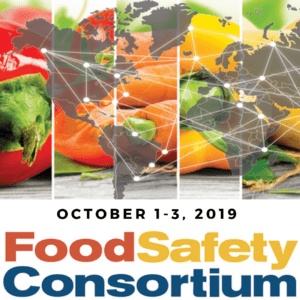 The Food Safety Consortium is a premiere event for food safety education and networking. The Consortium offers three days of informational sessions on topics including FSMA final rules, FDA inspections under FSMA, food defense, food recalls, new technology, hiring and retaining sanitation workers, building your food safety team, allergen management, proper use of sanitation chemicals, Prop 64, environmental monitoring, GFSI, and more.
The Food Safety Consortium is a premiere event for food safety education and networking. The Consortium offers three days of informational sessions on topics including FSMA final rules, FDA inspections under FSMA, food defense, food recalls, new technology, hiring and retaining sanitation workers, building your food safety team, allergen management, proper use of sanitation chemicals, Prop 64, environmental monitoring, GFSI, and more.
- DATE: October 1-3, 2019
- LOCATION: Schaumburg, Illinois
- REGISTER NOW!
PROCESS EXPO with Special Food Safety Training
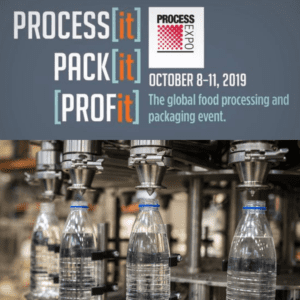 Kestrel will once again be joining FPSA at PROCESS EXPO, the nation’s largest trade show dedicated to bringing the latest technology and integrated solutions to all segments of the food and beverage processing and packaging industry.
Kestrel will once again be joining FPSA at PROCESS EXPO, the nation’s largest trade show dedicated to bringing the latest technology and integrated solutions to all segments of the food and beverage processing and packaging industry.
- DATE: October 8-11, 2019
- LOCATION: Chicago, Illinois
- REGISTER NOW!
SupplySide West with Featured Panel Discussion
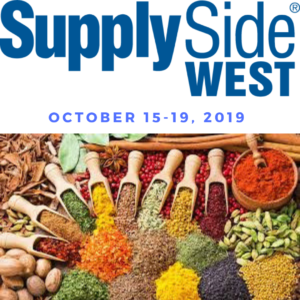 SupplySide West is all about the science and strategy around the development of finished products that drive the global business economy. Learn about new trends from over 1,300 exhibitors and 140 hours of educational and conference programming. Don’t miss Kestrel’s Workshop: FSMA & Import Requirements for Food & Supplement Brands.
SupplySide West is all about the science and strategy around the development of finished products that drive the global business economy. Learn about new trends from over 1,300 exhibitors and 140 hours of educational and conference programming. Don’t miss Kestrel’s Workshop: FSMA & Import Requirements for Food & Supplement Brands.
- DATE: October 15-19, 2109
- WORKSHOP DATE: October 16, 9 am – 12 pm
- LOCATION: Las Vegas, Nevada
- REGISTER NOW!
We look forward to seeing you this fall. Contact us if you are interested in learning more about one of these events or setting up a time to meet!
